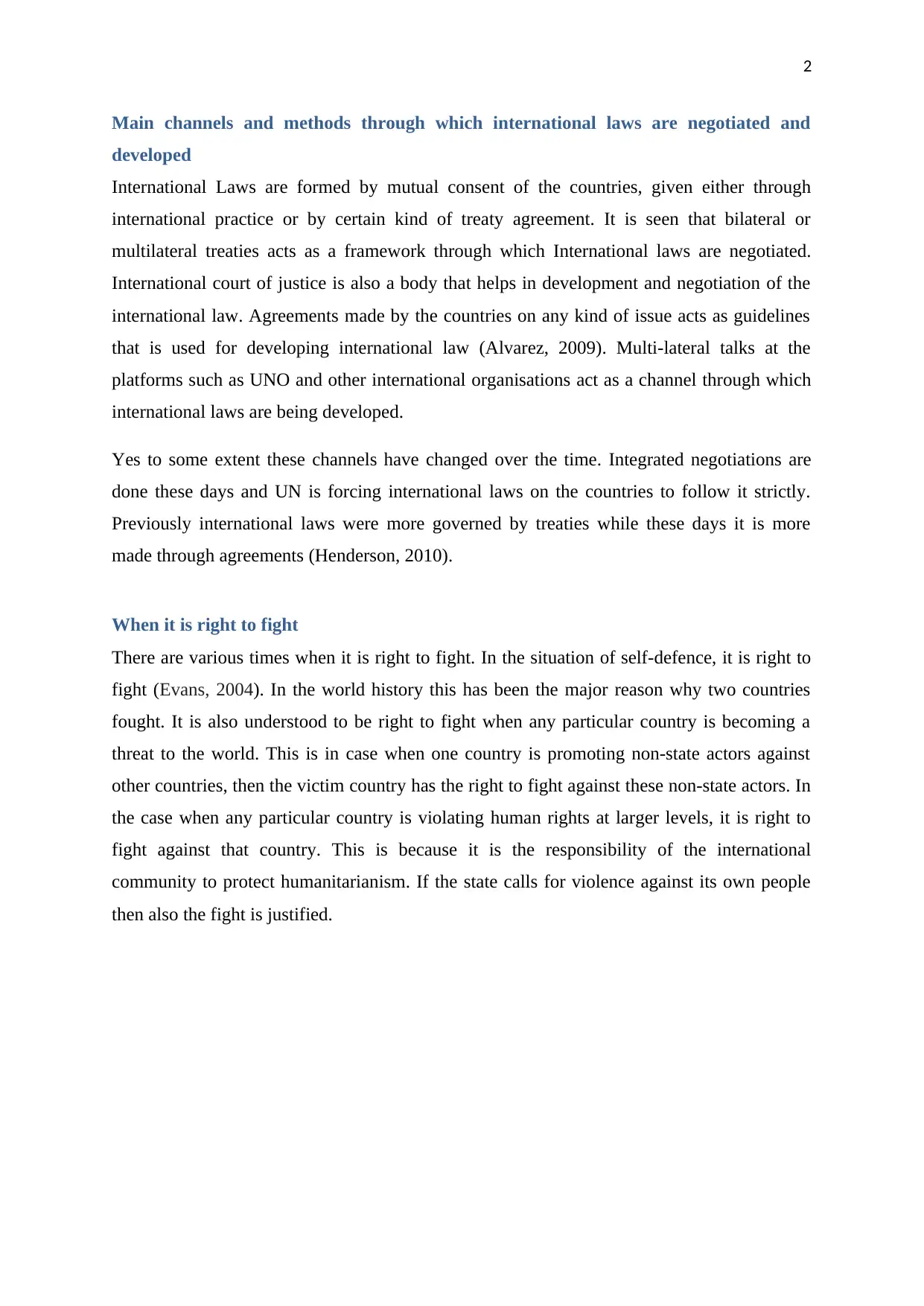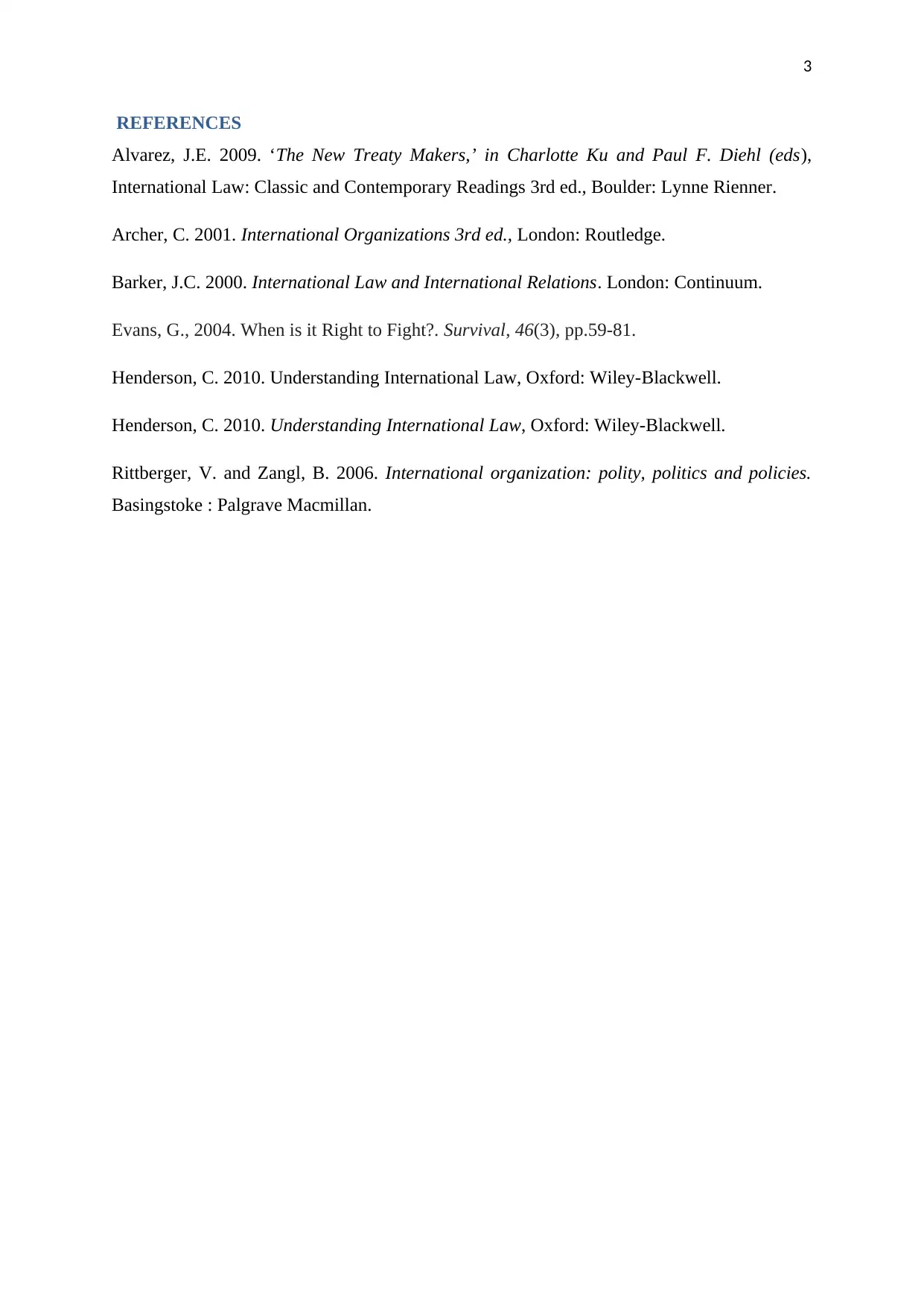Analyzing International Law and Relations: Development & Conflicts
VerifiedAdded on 2023/04/17
|4
|713
|231
Essay
AI Summary
This essay examines the intricate relationship between international law and international relations, highlighting how international law serves as a framework for stable and organized interactions among nations. It discusses the role of international law in governing foreign policy, driving international customs, and providing analytical frameworks for resolving disputes. The essay further elaborates on the functions of international organizations in accumulating information, providing aid, and facilitating bargaining and dispute settlement. It identifies treaties and international courts as key channels for negotiating and developing international laws, noting the shift from treaty-governed laws to agreement-based laws. Finally, the essay addresses the circumstances under which it is justifiable to engage in conflict, including self-defense, addressing threats to global security, and intervening in cases of severe human rights violations.
1 out of 4











![[object Object]](/_next/static/media/star-bottom.7253800d.svg)